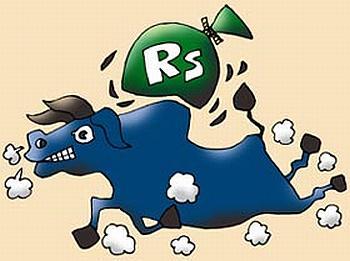
Learn to become a smart shopper and save money by using credit card reward points!
India is going plastic. No, not literally. With increasing globalisation, the Indian consumer has taken a liking for plastic money, better known as credit cards. The good news is that banks realise this liking and are offering many features. The bad news is that there are too many banks to choose from!
Confused? Don't be!
The Indian credit card story just seems to be expanding. Gone are the days when the credit cards were rejected by the people, when they were first introduced in the Indian market in 1991. Today it is impossible to imagine how many credit cards are being used in this country. It is rightly called plastic money. However, not only does it function as a substitute for cash, it is bettering it! Banks these days are offering reward points on every transaction that an individual makes. With banks constantly trying to increase their customer base in the credit card segment, it surely is advantage consumers!
Jayant Bhadauria, 34, head of education solutions at Adobe India, is one such beneficiary of the credit card reward points. Jayant and his wife are expecting their second child this month, for which he has his heart set on a Shoppers' Stop pram that costs Rs 7,800. Says Bhadauria: "I liked the pram. To dish out Rs 7,800 would hurt, but since I have credit card points to redeem I don't mind the indulgence." Adds Bhadauria "I use cards for their convenience and other benefits which I can milk."
You too can follow Jayant's example and use the monetary value of the points collected on your card to buy the product which you desire.
Courtesy:

How to accumulate points?
It's very simple! Every transaction using a credit card adds reward points to it. Hence, every swipe makes you richer by a preset amount of reward points. Generally you get one point per Rs 100-250 spent. This, however, depends on the type of card you own. Also it differs from bank to bank.
Also, banks offer more points on co-branded cards. For instance, State Bank of India gives one point per Rs 40 spent on its Gold Card and eight points per Rs 100 on its co-branded Tata Card.
The value of each reward point depends on the bank, and varies across credit cards and banks. Explains Sachin Khandelwal, head (cards), ICICI Bank, "The value of a point can be anywhere between 30 paise to a rupee and is also a function of the merchant partner in case of co-branded cards."
For example, the value of one point on the SBI Gold Card is 70 paise, while it is Re 1 on the SBI-Tata Card.
However, with the advantage of a high reward, a co-branded card comes with its own limitations. The limitation with most accelerated reward points on co-branded cards is that they can be redeemed only against products and services of the partnered establishment.
Also, these points get accumulated only when one swipes the card to purchase a product. The card doesn't give any reward points for cash withdrawals, if any.

How to redeem points?
This question basically tackles two things: What products can a customer use to redeem those reward points and the procedure to redeem the points.
What to redeem?
Initially when points redeeming were a new territory, banks used to offer only a limited variety of products. In addition to that, the prices used to be very high, offering no scope for negotiations. However, now there is a whole list of what can be done with these points.
The most common is the conventional catalogue which includes apparel, gadgets, jewellery, luggage items, and the like. There is also an option which allows customers to encash their points against gift vouchers. For instance, with HDFC Bank's Gold Card you can get gift vouchers from Domino's, Cafe Coffee Day, Pantaloons, Westside, Lee, Music World and Landmark.
However, going a step further, these days, banks have tied-up with certain merchants which allow you the opportunity to redeem your points instantly. You don't have to contact the bank and get vouchers; you can pay using the points.
When the consumer uses the card, the reward points get reflected on the machine as soon as it is swiped. So, if you have accumulated points worth, say, Rs 500 and you buy goods worth Rs 1,000, the merchant will offer you the choice of using your points for payment.
Some banks today offer air tickets on reward points, a feature that was earlier limited to co-branded cards.
HDFC Bank, for instance, has tied up with Jet Airways and Indian to allow its card users to convert their reward points into air miles. Usually, the value of one air mile is set equal to one reward point.
Speaking about this, Parag Rao, executive vice-president, head (product and portfolio management), credit cards, HDFC Bank, says, "The air miles required to get complimentary tickets would depend on the airline and the travel sector."
In addition to this, some banks, like Bank of Baroda, let one redeem their reward points against cash. That is, cash corresponding to one's reward points are credited to his/her account. Deutsche Bank does the same on its Gold Card, but also offers a gift catalogue.

Procedure
To redeem your points, you can start by filling up a redemption coupon which is present on a bank's website. You can also use the phone banking option. Banks also offer the choice of online redemption, for web-enabled credit card holders.
The banks can take anywhere between a week to a month to redeem the points.
How to choose the 'best'?
This is the toughest part. With so many cards to choose from, each offering different but multiple features, how does one know which one to pick?
Bhadauria wanted features, flexibility and convenience from his credit cards; he believed that HDFC Master Titanium fulfilled that need. "Of my five cards, I use HDFC Master Titanium card the most since I can pay the bills online and it gives me higher reward points for it. The card also offers many options to redeem my points," he says.
Hence, the message is clear: Figure out what you want. Too many cards means problem of plenty. If you are a frequent air traveller, then an airline-bank co-branded card might be better for you. If you want the cash-back card, then BoB or the Deutsche bank credit card will work for you.
As mentioned earlier, different bank and cards offer different redemption points. Also, the value of these redemption points differs from bank to bank Hence, it is important for a customer to be aware of the value of points. "Points accumulated and their value is important, in addition to the wide choice of redemption options," says Nirupam Sahay, chief marketing officer, SBI Cards.
For example, the co-branded ABN AMRO MakeMyTrip Go Card offers three reward points per Rs 100 spent. But, on purchases made on MakeMyTrip, the points range from 10 to 30. The reward points can be redeemed as cash back into your account.
The success of cash-back card has lead to an increase in the number of banks coming out with it. This has lead to an increase in the reward points being offered by those banks. Hence, one can choose the card that offers maximum cash-back on their frequent spends and offers an array of redemption choices.
Technology has aided customers, in a way that they can compare the credit card features of all banks. Since, all banks display their products online it is always easy to pick up the card which suits one the best.
Warning: Check the expiry date
However, as a last word of warning, one must add that all these redemption points come with an expiry date. All the points accumulated with the card swiping will go waste if your points expire. Hence, while filling up the redemption coupon, be sure to check the expiry date.
However, this practise of expiry date might soon be a thing of the past as most banks have already started doing away with the expiry period.
With so many schemes and redemption points being offered by banks, the consumer really is the king. However, by keeping vigil and by shopping intelligently, every consumer can utilise the redemption points wisely. So, go on, swipe and get rewards!